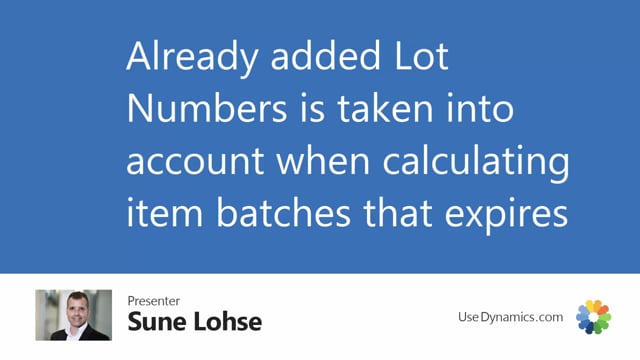
Playlists Manage
Log in to create a playlist or see your existing playlists.
Log inWhen you use Reverse Planning to calculate inclusive items that expires, it will draw an inventory profile to calculate if the item is critical or not.
And when this profile is drawn, it’s the same if you show the graphical profile, you can see item numbers that expires here.
And when it does this calculation, it will default assume that the oldest or the first expiring lot number will be used for the oldest demand for the first demand.
But if you, for instance, this sales order here, you have a source number and there’s no lot number when you look at it.
So, we haven’t set any item tracking lines up.
But if I’m looking at the first sales order line here, there’s a lot number, meaning somebody added to the sales order line, a specific lot number that should be applied when selling this sales order.
And it takes those into account.
So, it actually takes into account already assigned lot numbers.
And that of course will influence when the items are expiring.

